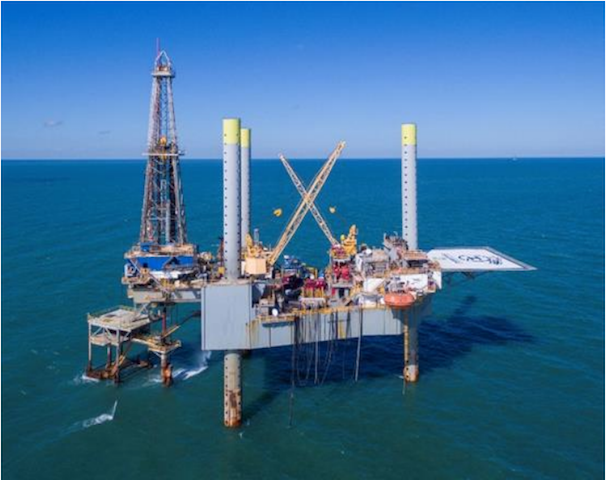For Gulf of Mexico workboat operators, a shrinking offshore drilling fleet is not a positive development. However, a healthy oil price that restarts drilling and development activity will be.
The late December figures for the offshore drilling market from IHS Markit Petrodata reflect the improvement underway in the industry’s fortunes. Importantly, the stats point to a better 2022. The data for the week ending Dec. 23, 2021, compared with a year-ago, showed an 11-rig decline in total supply, but only a two-rig decline in marketed supply. The significant change was the five-rig increase in contracted rigs. That translated into an 18.5% gain for fleet utilization, taking it from the low 60s to the low 80s percent. The fleet utilization rate ended 2021 above the level traditionally associated with the start of day rate pricing improvement. Petroleum companies seeing fewer rigs available are willing to pay higher day rates to get the rig they need and want for their drilling work. To the extent workboat operators have trimmed their available marketed fleets, the trends in the drilling rig market suggest stronger vessel pricing is in the offing, too.
With offshore equipment availability shrinking to a level more closely matching current demand, the key will be whether producers step up their exploration and development spending this year. The answer to that question is slowly emerging, although some qualifying issues still overhang a wildly bullish outlook. First, oil and gas demand should continue to grow in 2022 and after. Given half a decade of serious underinvestment in petroleum exploration, the industry will struggle to grow its reserves and production. OPEC+ is adding back its production shut-in during the 2020 economic lockdowns, but that additional supply will be exhausted by the second half of this year. That means the world will turn to the U.S. for greater supplies. Initially they will come from stepped up drilling and production from the onshore shale basins, but eventually additional supply will come from the larger, more productive fields found offshore.
The greatest imponderables for this outlook lie with the issues overhanging the increased petroleum demand outlook. The immediate challenge to demand is from Omicron, and eventually other Covid variants and how societies react. Changed government energy policies plus ESG (environment, social, and governance) pressures on companies are potentially major industry disruptors.
The U.S. government’s push to rapidly build an offshore wind industry opens new market opportunities for workboat companies, but it also represents a negative attitude towards the use of fossil fuels. The government’s new methane emission restrictions and its push to overhaul federal leasing policy, which will impact the economics of exploring on federal land, including offshore, reflect this negative view and could dampen the pace of the industry recovery.
Tempering that recovery pace may be aided by the growing ESG push of energy investors and lenders to restrict access to capital for fossil fuel businesses. ESG is a key weapon in the push for an energy transition away from fossil fuels that is demanded by climate activists. Stopping fossil fuel use immediately is their goal to ensure the survival of the planet. The reality is that oil and gas need to and will remain important components of the world’s energy mix for decades to come. As a result of ESG pressures, however, the rate of return on energy projects will rise, as industry capital will need to be allocated. That will help lift future industry profitability, which will accompany higher oil and gas prices, starting a new cycle of more capital available for lucrative offshore projects.
The oil and gas industry enters its second year of recovery in 2022, with economic and financial conditions suggesting it will become a typical cycle lasting five-to-seven years. We are in the early phase of this upturn. Strong demand and commodity prices will encourage petroleum companies to boost their capital spending, while continuing to demonstrate financial discipline. Capex spending is targeted to increase modestly in 2022.
Investments in green energy projects to satisfy ESG demands will command a larger portion of petroleum industry cash flow, but it will cause the balance of funds being reinvested to seek the best long-term returns, and offshore is likely to receive its share.
Improved balance sheets and reduced available equipment are a recipe for increased profits for service companies. Better days will bring new challenges for service company managers, such as how best to manage growth while meeting the ESG and financial return demands of shareholders. After dealing with a contracting industry for the past five-to-seven years, managing growth will be a welcome change.




